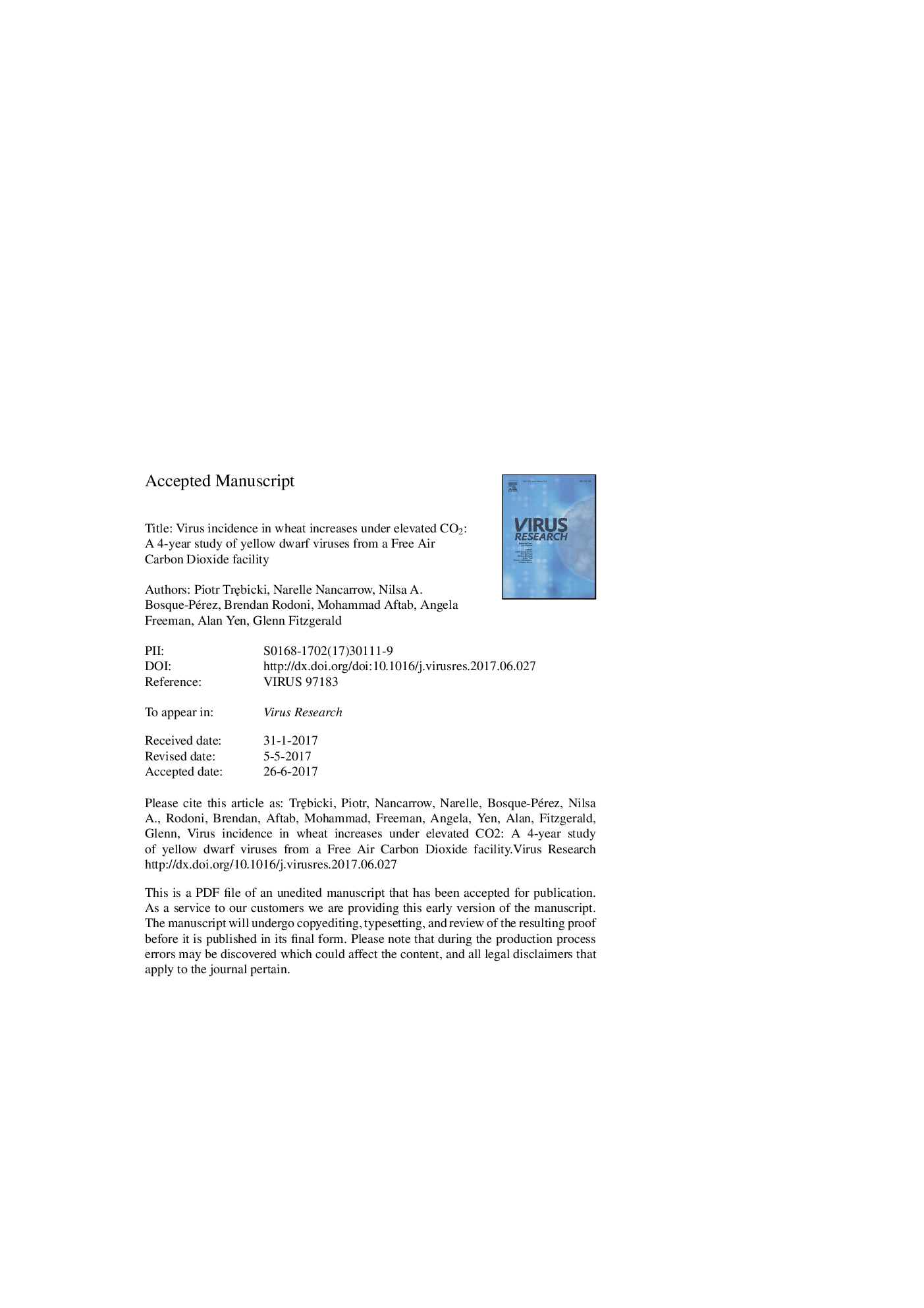| Article ID | Journal | Published Year | Pages | File Type |
|---|---|---|---|---|
| 8752108 | Virus Research | 2017 | 22 Pages |
Abstract
The complexities behind the mechanisms associated with virus-host-vector interactions of vector-transmitted viruses, and their consequences for disease development need to be understood to reduce virus spread and disease severity. Climate has a substantial effect on viruses, vectors, host plants and their interactions. Increased atmospheric carbon dioxide (CO2) is predicted to impact the interactions between them. This study, conducted under ambient and elevated CO2 (550 μmol molâ1), in the Australian Grains Free Air Carbon Enrichment facility reports on natural yellow dwarf virus incidence on wheat (including Barley/Cereal yellow dwarf viruses (B/CYDV)). A range of wheat cultivars was tested using tissue blot immunoassay to determine the incidence of four yellow dwarf virus species from 2013 to 2016. In 2013, 2014 and 2016, virus incidence was high, reaching upwards of 50%, while in 2015 it was relatively low, with a maximum incidence of 3%. Across all years and most cultivars, BYDV-PAV was the most prevalent virus species. In the years with high virus incidence, a majority plots with the elevated levels of CO2 (eCO2) were associated with increased levels of virus relative to the plots with ambient CO2. In 2013, 2014 and 2016 the recorded mean percent virus incidence was higher under elevated CO2 when compared to ambient CO2 by 33%, 14% and 34%, respectively. The mechanism behind increased yellow dwarf virus incidence under elevated CO2 is not well understood. Potential factors involved in the higher virus incidence under elevated CO2 conditions are discussed.
Related Topics
Life Sciences
Immunology and Microbiology
Virology
Authors
Piotr TrÄbicki, Narelle Nancarrow, Nilsa A. Bosque-Pérez, Brendan Rodoni, Mohammad Aftab, Angela Freeman, Alan Yen, Glenn J. Fitzgerald,
